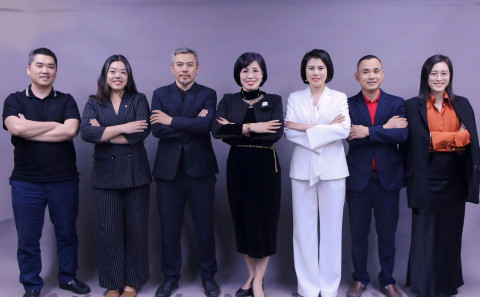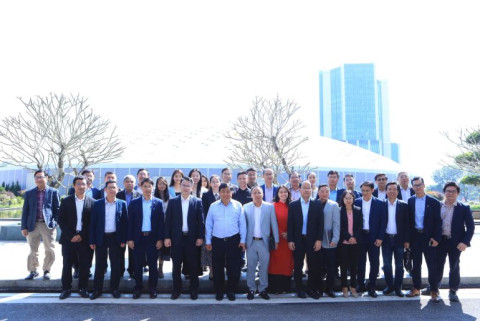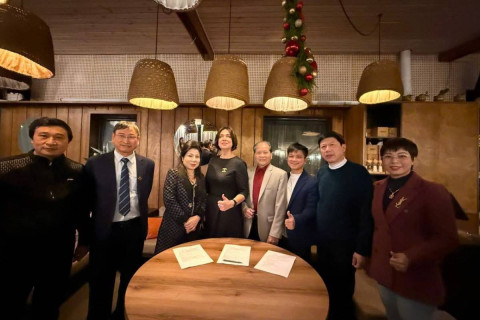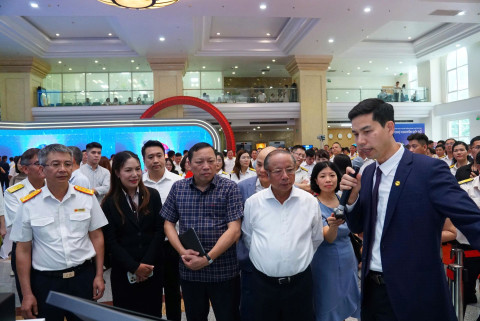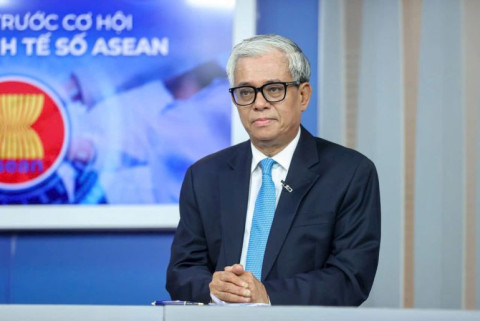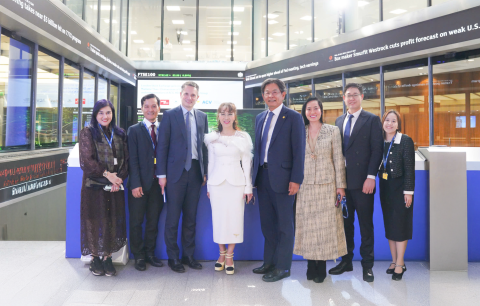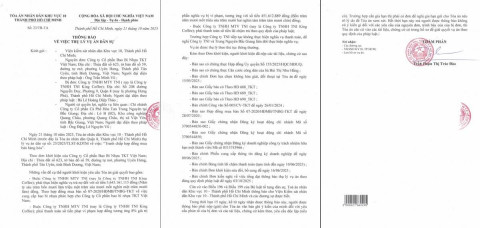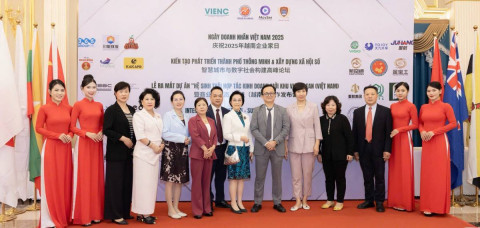Ho Chi Minh City Attracts Record $1 Billion in Investment
- 181
- Business
- 14:38 29/01/2024
DNHN - The latest figures show that in 2023, for the first time, the total investment capital poured into industrial parks in Ho Chi Minh City (both new and adjusted) exceeded $1 billion, nearly doubling the plan and increasing by 84% compared to 2022.
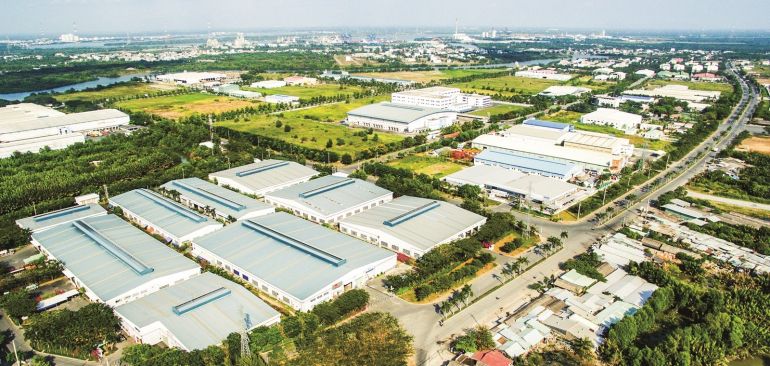
The newly released figures show that in 2023, for the first time, the total investment capital poured into Industrial Parks (IPs) in Ho Chi Minh City (including both new and adjusted IPs) surpassed the $1 billion mark, nearly doubling the plan and increasing by 84% compared to 2022.
Of that total, foreign investment capital reached about $223 million, up more than 13% compared to 2022. Ho Chi Minh City recorded 16 new projects with registered investment capital of $63 million and 34 projects adjusting capital, with an additional capital of $160 million.
In terms of domestic investment, the total attracted capital reached VND18,531 billion (equivalent to $789 million), up 124% compared to 2022. Notably, Viettel’s project in Cu Chi district invested $624 million.
Mr Tran Viet Ha, Deputy Head of Ho Chi Minh City Export Processing and Industrial Zones Authority (Hepza), said that this is the first year that there has been a breakthrough in attracting investment into IPs. Previously, each year only attracted investment capital from $400 to $800 million. Notably, this year, Viettel’s project in the fields of data centres, information technology, and digital transformation has accounted for a significant amount of capital.
In addition, Mr Hua Quoc Hung, Head of Hepza, shared the good news that although the land fund decreased by 68% and the fund of the factory for lease decreased by 8.5% compared to the previous year, Ho Chi Minh City still achieved positive signals in attracting investment. The investment rate per hectare of land has also increased, specifically reaching an average of $8.1 million/ha, and for foreign investment projects, this figure is nearly $11.6 million/ha.
“We have been more selective and taken better care of investors and industries attracted to Ho Chi Minh City, in the context of increasingly shrinking land funds,” Mr Hung emphasised.
Resolution 98 of the National Assembly has opened up new space for Ho Chi Minh City (HCMC) to attract investment with large-scale, ambitious projects. The breakthrough mechanisms and policies applied under this resolution create great opportunities for HCMC to attract strategic investors.
The resolution has identified priority industries and professions to attract strategic investors to the city, including investment in building innovation centres, research and development (R&D) centres, investment in research and support for high-tech transfer in the fields of information technology, biotechnology, automation technology, new materials technology, and clean energy with an investment capital scale of VND3,000 billion or more.
HCMC also prioritises attracting large investors in the field of semiconductor integrated circuits, design technology, manufacturing of electronic components, integrated microcircuits (ICs), flexible electronics (PE), chips, new technology batteries, new materials, and clean energy industry with an investment capital scale of VND30,000 billion or more.
With this series of incentives, if implemented early and effectively, HCMC will have a great opportunity to attract strategic investors to invest. The Chairman of HCMC People’s Committee, Mr Phan Van Mai, in meetings with businesses, emphasised that HCMC is entering a new stage in the field of investment attraction. The city resolutely does not accept projects using backward technologies, consuming energy, and causing environmental pollution.
HCMC also commits to applying selective criteria for foreign investment, not encouraging, and will carefully consider granting licenses for projects that use a lot of labour-intensive and land resources. On the contrary, the city will prioritise countries with high technology and leading supply chains, focusing on developing a green, environmentally friendly economy based on the application of high technology.
However, Mr Mai also recognised that HCMC is facing a shortage of industrial land funds to attract large projects and large investors in new industries and professions. Supplementing the planning for Pham Van Hai I and Pham Van Hai II Industrial Parks is an important part of creating conditions for the city to develop specialised industries such as electronics, biomedicine, and supporting industries. On the other hand, HCMC has completed and is submitting the general planning dossier for Thu Duc City, and is expected to organise an investment promotion conference after approval, to promote local economic development.
Hung Hoa
Related news
- Connecting Leaders, Shaping the Future: Strategic Leadership Planning Meeting – CorporateConnections Hanoi A
- Sunlight - Unilever Vietnam Recognized for Outstanding Contributions to the National Initiative Supporting Women Entrepreneurs
- Deputy Prime Minister Nguyễn Chí Dũng: “The country’s major challenges weigh heavily on my mind — and we must resolve them together.
- Unitsky String Technologies signs cooperation agreements with three Vietnamese partners, opening a new direction for smart mobility and sustainable development
- When artists do business – livelihood is no poetry!
- Before the D‑day to abolish flat‑rate tax: Fear of technology and costs leave small traders struggling to adapt
- Vietnamese enterprises at a crossroads: the impact of a potential US–China deal
- "Digital technicians" must not be forgotten if Vietnam aims to meet its strategic goals
- HDBank: Impressive profit growth, leading in profitability and advancing international integration
- TNI King Coffee sued for over VND 5 Billion in unpaid debts
- VINASME and Jeonnam Technopark Sign MOU on technology cooperation, human resource training, and trade promotion
- Vietnamese entrepreneurs strengthen ASEAN connectivity in the digital iIntegration era
- Prime Minister: Vietnam aims to become a regional logistics hub
- Vietnam upgraded to Secondary Emerging Market by FTSE Russell
- Hanoi’s economy grows 7.92% in first nine months of 2025, FDI surges nearly threefold
- Vietnam’s strong gdp growth fails to ease labor market distress
- US tariffs on Brazil propel Vietnam’s pangasius into global spotlight
- VietLeap AI Accelerator launches: A strategic springboard for Vietnam’s AI startups
- CICON expands strategic alliances: A new step forward in Vietnam–Korea business connectivity
- What must Vietnamese enterprises do to maintain their position in the global supply chain?
Đọc thêm Business
Connecting Leaders, Shaping the Future: Strategic Leadership Planning Meeting – CorporateConnections Hanoi A
"Your network is your most powerful flowing asset. It generates value, multiplies opportunities, and accelerates your influence across borders."
Innovative ESG enterprise: Trạm Xe Việt startup proposes solutions to build a green mobility ecosystem
As Vietnam commits to achieving Net Zero by 2050 and tightens emissions standards, the transportation sector faces unprecedented pressure to transform.
Deputy Prime Minister Nguyễn Chí Dũng: “The country’s major challenges weigh heavily on my mind — and we must resolve them together.
On the morning of November 26, 2025, Deputy Prime Minister Nguyễn Chí Dũng chaired a high-level working session at the National Innovation Center (NIC) in Hòa Lạc.
Unitsky String Technologies signs cooperation agreements with three Vietnamese partners, opening a new direction for smart mobility and sustainable development
The signing ceremony took place in Minsk, Belarus, on November 28, 2025.
Before the D‑day to abolish flat‑rate tax: Fear of technology and costs leave small traders struggling to adapt
From 1 January 2026 the flat‑rate tax regime will be abolished. Small business households will be required to declare tax based on actual revenue. MISA supports the transition with technology to help micro‑merchants adapt smoothly and transparently.
Vietnamese enterprises at a crossroads: the impact of a potential US–China deal
As the world closely monitors every shift in US-China relations, emerging signals of a strategic agreement between the two global powers are raising hopes for global economic stability.
HDBank: Impressive profit growth, leading in profitability and advancing international integration
Ho Chi Minh City Development Joint Stock Commercial Bank (HDBank, stock code HDB) announced its consolidated profit before tax for the first 9 months of 2025 reached VND 14,803 billion, marking a 17% increase year-on-year (YoY).
TNI King Coffee sued for over VND 5 Billion in unpaid debts
On October 21, 2025, the People’s Court of District 10 in Ho Chi Minh City officially accepted a civil lawsuit concerning a commercial contract dispute between TKT Vietnam Plastic Packaging Joint Stock Company and TNI King Coffee Co., Ltd.
VINASME and Jeonnam Technopark Sign MOU on technology cooperation, human resource training, and trade promotion
On October 15, 2025, in Hanoi, VINASME and Jeonnam Technopark (Korea) signed an MOU to promote trade, advance technology transfer, and develop human resources between enterprises of both nations.
Vietnamese entrepreneurs strengthen ASEAN connectivity in the digital iIntegration era
On the occasion of Vietnam Entrepreneurs’ Day (October 13), an international event themed “Integration – Innovation – Sustainable Development” was solemnly held in Ho Chi Minh City.


